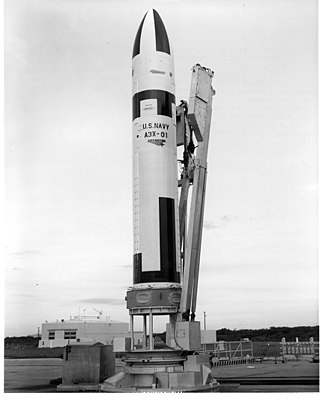
The UGM-27 Polaris missile was a two-stage solid-fueled nuclear-armed submarine-launched ballistic missile (SLBM). As the United States Navy's first SLBM, it served from 1961 to 1980.
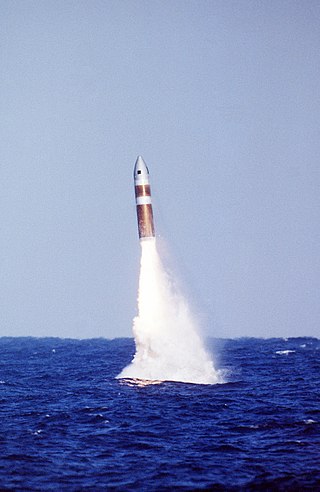
The UGM-73 Poseidon missile was the second US Navy nuclear-armed submarine-launched ballistic missile (SLBM) system, powered by a two-stage solid-fuel rocket. It succeeded the UGM-27 Polaris beginning in 1972, bringing major advances in warheads and accuracy. It was followed by Trident I in 1979, and Trident II in 1990.

The United States Military Academy (USMA), also known metonymically as West Point or simply as Army, is a United States service academy in West Point, New York. It was originally established as a fort, since it sits on strategic high ground overlooking the Hudson River with a scenic view, 50 miles (80 km) north of New York City. It is the oldest of the five American service academies and educates cadets for commissioning into the United States Army.

A ballistic missile submarine is a submarine capable of deploying submarine-launched ballistic missiles (SLBMs) with nuclear warheads. The United States Navy's hull classification symbols for ballistic missile submarines are SSB and SSBN – the SS denotes submarine, the B denotes ballistic missile, and the N denotes that the submarine is nuclear powered. These submarines became a major weapon system in the Cold War because of their nuclear deterrence capability. They can fire missiles thousands of kilometers from their targets, and acoustic quieting makes them difficult to detect, thus making them a survivable deterrent in the event of a first strike and a key element of the mutual assured destruction policy of nuclear deterrence.
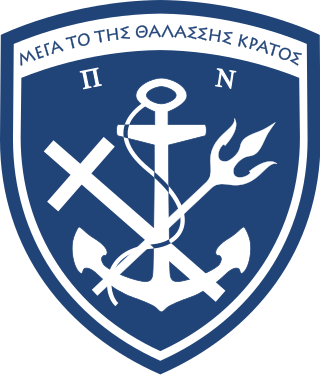
The Hellenic Navy is the naval force of Greece, part of the Hellenic Armed Forces. The modern Greek navy historically hails from the naval forces of various Aegean Islands, which fought in the Greek War of Independence. During the periods of monarchy it was known as the Royal Hellenic Navy.

The UGM-96 Trident I, or Trident C4, was an American submarine-launched ballistic missile (SLBM), built by Lockheed Martin Space Systems in Sunnyvale, California. First deployed in 1979, the Trident I replaced the Poseidon missile. It was retired in 2005, having been replaced by the Trident II.

The Boeing P-8 Poseidon is an American maritime patrol and reconnaissance aircraft developed and produced by Boeing Defense, Space & Security, and derived from the civilian Boeing 737-800. It was developed for the United States Navy (USN).

Full Tilt! Pinball is a pinball video game developed by Cinematronics and published by Maxis in 1995. It features pre-rendered 3D graphics and three tables: Space Cadet, Skullduggery, and Dragon's Keep. On each table, side displays show the players' scores, ball numbers, player numbers, various other information, and a table-specific image.

Zeus: Master of Olympus is a single-player strategy game developed by Impressions Games and published by Sierra Studios. It is considered to be an additional installment in the City Building series of games. Like previous titles in the series, Zeus focuses on the building and development of a city in ancient times. The game features a number of changes from previous titles in the series, including being set in Ancient Greece as well as changes to certain gameplay mechanics; however, it is considered to be in most aspects very similar to its predecessor, Caesar III.
Bill the Goat is the mascot of the United States Naval Academy. The mascot is a live goat and is also represented by a costumed midshipman. There is also a bronze statue of the goat in the north end zone of Navy–Marine Corps Memorial Stadium. This statue also plays a role in "Army Week" traditions.
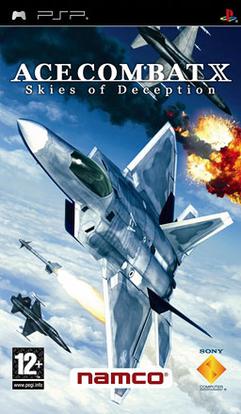
Ace Combat X: Skies of Deception is a 2006 combat flight simulation video game for the PlayStation Portable. It is the first installment of the Ace Combat franchise for the PlayStation Portable, and the second for a handheld game system.

Star Trek: Starfleet Academy is a Star Trek PC simulation game developed and published by Interplay in 1997. The game simulates the life of a typical Starfleet cadet, with the player learning the basics of flying a starship and engaging in roleplaying with a crew of cadets, with the eventual goal of becoming captain of their own ship. The game included full motion video featuring William Shatner, Walter Koenig, and George Takei reprising their roles from the original television series and movies, and a multiplayer simulation mode allowing for up to 32 players.

WinBack 2: Project Poseidon, known in Europe as Operation WinBack 2: Project Poseidon, is a third-person shooter video game and the second game of the WinBack series. It was developed by Cavia for Koei. The game was released in 2006 for the PlayStation 2 and Xbox game consoles.
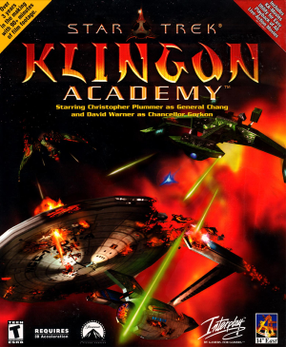
Star Trek: Klingon Academy is a space flight simulator video game developed by 14 Degrees East, an internal development house of publisher Interplay Entertainment. The game follows a young Klingon warrior named Torlek as he attends the Elite Command Academy, a war college created by General Chang to prepare warriors for a future conflict with the United Federation of Planets. Christopher Plummer and David Warner reprised their respective roles as Chang and Gorkon for the production of Klingon Academy.
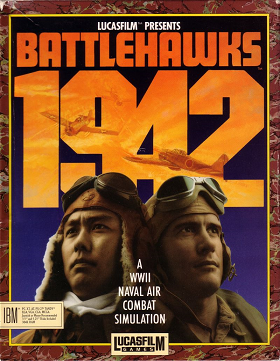
Battlehawks 1942 is a naval air combat combat flight simulation game released in 1988 by Lucasfilm Games. It is set in the World War II Pacific air war theatre, and was the first of Lucasfilm Games' trilogy of World War II flight simulations, followed by Their Finest Hour (1989) and Secret Weapons of the Luftwaffe (1991). The 127-page manual for Battlehawks 1942 includes a 100-page illustrated overview of the Pacific War.

Colony Wars is a space combat simulator video game for the PlayStation developed and released by Psygnosis in 1997. Players complete space combat missions using preselected starfighters equipped with various weapons. The game features multiple paths of missions and outcomes, depending on the player's performance. It was followed by Colony Wars: Vengeance in 1998, and Colony Wars: Red Sun in 2000.

The 1912 Army Cadets football team was an American football team that represented the United States Military Academy as an independent during the 1912 college football season. Under head coach Ernest Graves Sr., the Cadets compiled a 5–3 record and outscored opponents by a total of 108 to 59. The Cadets lost to a one-loss Yale team, a strong Carlisle Indians team led by 1912 decathlon gold medalist Jim Thorpe, and to Navy in the annual Army–Navy Game.
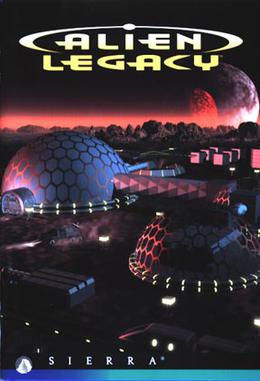
Alien Legacy is a sci-fi strategy game developed by Ybarra Productions and published by Sierra On-Line in 1994 for MS-DOS.

Gravon: Real Virtuality is a 1995 video game developed by Suma. The game originally was released for Atari Falcon and later ported to Microsoft Windows in 2013 and packed as a bonus game to Take On Mars. The famous game Operation Flashpoint: Cold War Crisis is considered to be a spiritual successor to Gravon.
The 1967 Army Cadets football team represented the United States Military Academy in the 1967 NCAA University Division football season. In their second year under head coach Tom Cahill, the Cadets compiled an 8–2 record and outscored their opponents 183 to 94.


















